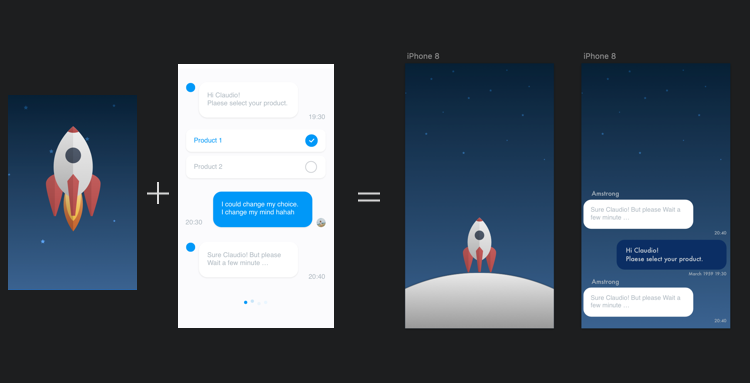How to bootstrap your iOS app to iterate faster
I love developing new iOS apps and create new products. However, regardless of the project, it often need a team to mix the required skills: design, coding, marketing. Although, this less and less true, so let’s see how to bootstrap your iOS app.
Find the idea
This might be the most common advice but ideas are cheap. Everybody have some, so as soon as we listen to people, we’ll hear many of them.
It can vary in the form, maybe it’s not yet an idea, maybe it’s only a problem for now. But maybe you can build a solution.
However, those ideas aren’t consistent, so be ready. Maybe it’s not when you’re waiting for one that it will pop. I personally keep a notebook with me at all time, just in case. And sometimes I go back to it and see what young me thought what was a good idea.
Another way to find app ideas it to read open questions from Medium or Quora. People are willing to write content about specific subject. With your skills and your personal perception, maybe you can find a specific way to find address that problem. That will become your idea.
Define your Minimum Viable App
Once you’ve got your app idea, you need to know what’s going to be its core value. The one feature you can’t miss, that is your your MVP: your minimum viable product.
If you’re creating an itinerary app, you’ll need to make sure, your search and itineraries are correct. Nobody will care of creating an account or adding to favorite if they can’t find their way around.
Mock up and Design
For me, that’s the tricky part. I’m far from being a designer. Fortunately, I’ve developed some skills along the way to be able to bootstrap one. But first, let’s study the competitions.
Based on your MVP, check other competitors apps and list what works for them.
Once done, I would usually already have couple things I would like to add or avoid in my design. Although some are standard of the business. Back to an itinerary app, you’ll see that Google Maps and Apple Maps are really close to each other. If you use those components, you’ll make it easier for your users to find they way around.
Finally, let’s get some fresh designs and ideas. I often hang out on Dribbble and sketchappresources to source some inspiration and designs.
An example is the following splash screen. I was working on a side project related to space travelling, so I broke down different designs to get that one.

Coding
We’ve got our app designed, user flow drafter and our mission defined. Let’s get to the coding.
I usually start by identifying what’s going to be the most challenging part of the project. Do I need to parse data? Do I need to consume a distant api? Do I need special animations?
I would follow up by making some research through existing tools and libraries to address that matter. For instance, if I need a chat interface, I know some already exists, it might save me precious hours of development.
Finally, I would try limit the amount of work until first version came out. What I mean is to stay focus on the MVP and core value, it doesn’t need to be perfect, just good enough.
Therefore, it happens I cut corners in those side projects to hit the market quickly, and incrementally refactor when needed.
Testing and tooling
Your app is finally ready but you’re the only one tester. It’s time to ask for a little help, try to get any feedbacks from your colleagues, friends or family. Remember the idea is too speed up development, not deliver cheap. App crash is the worst first experience, so let’s ban from any of your first version.
Along the way, between product management, development, design or testing, you might feel under equipment. Fortunately, people gathered and listed all those awesome tools on Github, which goes far beyond design only.
I would also suggest to browse ProductHunt on weekly basis to see what other great tools can help you in your journey.
It feels knowledge and skills are hard to source when you want to create an app. I don’t fully agree, it’s more about how resourceful and creative can you be to create your app. I share with you my tips and workflow to drastically reduce the cost and time of development and focus on the product and its growth.
Finally my last tip would be to stay customer focus to make sure you build a relevant product. There is no more waste than creating an app that isn’t needed.